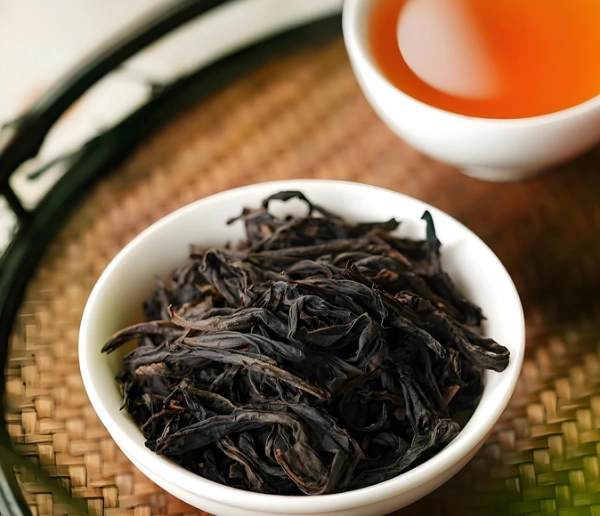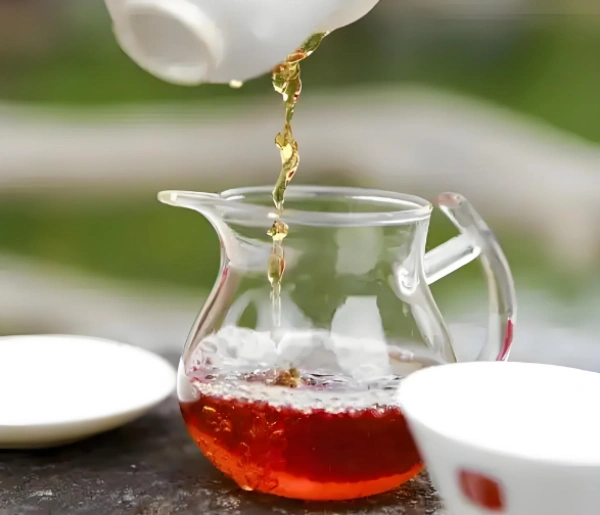Oolong tea for yoga meditation offers a transformative bridge between your asanas and your breathwork—a warm, fragrant pause that harmonizes your spirit and senses. Imagine finishing a gentle Sun Salutation, heart beating steadily, and reaching for a warm cup of oolong. Steam curls into the air, carrying orchid‑like florals and roasted chestnut notes straight to your awareness. With the first sip, L‑theanine and moderate caffeine glide into your bloodstream, gently lifting mental fog while inviting deep calm.
In this guide, we’ll explore why oolong tea for yoga meditation is more than a drink: it’s a ritual that enhances focus, relieves stress, supports recovery, and even sharpens study sessions. Let’s step onto the mat—and into the tea ceremony at once.
1. Why Oolong Tea Enhances Yoga Meditation
Yoga meditation thrives on two pillars: relaxed alertness and sensory presence. Oolong tea for yoga meditation delivers both:
- Balanced Caffeine Lift: At roughly 30–50 mg per cup, oolong provides enough caffeine to sharpen awareness without the jittery edge of coffee.
- L‑Theanine Tranquility: This unique amino acid crosses the blood‑brain barrier, promoting alpha‑wave activity that underpins calm focus【1】.
- Sensory Engagement: Tasting honeyed sweetness, inhaling floral aromas, and feeling warmth in your hands deepen mindfulness of each moment.
By weaving oolong tea for yoga meditation into your practice, you plant attention in body and breath—and sip your way to centered presence.

2. The Science Behind Calm: L‑Theanine & Caffeine Synergy
Research illuminates the magic duo in oolong tea for yoga meditation. In one double‑blind study, participants consuming L‑theanine with caffeine demonstrated significant improvements in attention and reaction time compared to caffeine alone【1】:
“L‑theanine combined with caffeine improved cognitive performance and alertness while reducing mental fatigue.”
Read the study →【1】
Another trial noted that tea‑drinkers exhibited lower stress markers (cortisol) after acute stress tasks, suggesting oolong tea for stress relief can buffer the mind during challenging practices【2】.
3. Oolong Tea for Stress Relief: Preparing Mind and Body
Before settling into meditation, calm the sympathetic nervous system with oolong tea for stress relief:
- Morning Flow: Brew a light Tieguanyin, inhale its orchid‑floral scent, and feel tension melt from neck and shoulders.
- Midday Reset: After a busy work session, steep a Phoenix Dan Cong for its honey‑fruit complexity—each sip signals “pause” to the brain.
- Evening Ease: Choose a gentler oolong (short steeps, cooler water) to avoid overstimulation, aiding your body’s natural relaxation rhythms.
These rituals demonstrate how oolong tea for yoga meditation and stress relief blend into one soothing practice.
4. Integrating Oolong Tea into Your Post-Workout Recovery
If your yoga includes vigorous Vinyasa or Power sessions, follow up with oolong tea for workout recovery:
- Antioxidant Rescue: Polyphenols like EGCG reduce exercise‑induced oxidative stress, supporting muscle repair.
- Hydration & Circulation: Warm tea replenishes fluids; mild caffeine enhances blood flow to fatigued tissues.
- Relaxing Amino Acids: L‑theanine soothes post‑flow tension, helping you transition from dynamic sequences to stillness.
Pair your post‑flow sip with a banana or almond butter toast to nourish both body and spirit in alignment with oolong tea for workout recovery principles.

5. Boosting Concentration: Oolong Tea for Study Focus
Beyond the mat and recovery, oolong tea for study focus offers gentle mental clarity:
- Sustained Attention: The caffeine‑L‑theanine cocktail prevents mid‑session slumps during long readings or lectures.
- Neuroprotective Polyphenols: Studies link tea polyphenols to improved cognitive resilience in aging adults, suggesting long‑term brain health benefits【3】.
- Mindful Breaks: A short tea ritual between study blocks signals the brain to reset, reinforcing Pomodoro‑style productivity.
Whether you’re memorizing Sanskrit chants or reviewing anatomy charts, oolong tea for yoga meditation extends into academic focus.
6. Step‑by‑Step Ritual: Brewing Oolong Tea for Meditation
Create a simple tea ceremony that dovetails seamlessly with your yoga meditation practice:
- Select Your Oolong: Choose a light to medium oxidized variety—Tieguanyin or Dan Cong—for clarity without overstimulation.
- Heat Water: Aim for 185–195 °F (85–90 °C). Boiling water can scorch leaves, producing bitterness.
- Measure Leaves: Use 2 g of loose leaves per 6 oz (180 ml) of water—about 1 teaspoon.
- First Rinse (Optional): Pour water over leaves, swirl for 5 s, then discard to awaken the aroma.
- Steep:
- First Infusion: 1.5–2 minutes
- Second: 2–2.5 minutes
- Third & Beyond: Add 30 s per infusion, savoring evolving notes.
- Mindful Sipping: Place your cup in front of you, close your eyes, inhale deeply, then sip slowly—let flavor guide your breath.
By following this oolong tea for yoga meditation brewing guide, you cultivate presence before each practice.
7. Flavor Enhancements & Pairings for Mindful Sips
Elevate your tea ritual with subtle additions that enhance oolong tea for yoga meditation:
- Citrus Zest: A twist of orange peel brightens floral notes and adds vitamin C.
- Fresh Ginger: A few slices warm the body, aiding in digestion if consumed before practice.
- Light Snacks: Pair with sliced apple or a small handful of walnuts to maintain energy without distraction.
Experiment with these mindful pairings to discover your favorite taste‑awakening combinations.

8. Precautions & Side Effects to Watch
While oolong tea for yoga meditation offers many perks, heed these cautions:
- Caffeine Sensitivity: If you’re prone to jitters, limit to 1 cup, or choose a lower‑caffeine variety.
- Tannin Irritation: Avoid on an empty stomach; tannins can cause nausea or acid reflux.
- Timing: Steer clear of tea within 2 hours of iron‑rich meals to prevent mild absorption interference.
By practicing mindful moderation, you ensure your meditative tea moments remain blissful rather than bothersome.
9. Conclusion & Invitation to Your Oolong Tea Ritual
Integrating oolong tea for yoga meditation invites a sensory anchor to your practice, binding breath, movement, and mind into a cohesive rhythm. From stress relief and workout recovery to study focus, oolong’s balanced caffeine and calming L‑theanine serve as a versatile ally. Begin tomorrow’s session by brewing your favorite oolong, honor each sip with gratitude, and notice how your meditative state deepens. Share your personal oolong tea for yoga meditation rituals—what variety you choose, your brewing tweaks, and the moments of insight that follow. Together, let’s steep ourselves in presence, one fragrant cup at a time.



